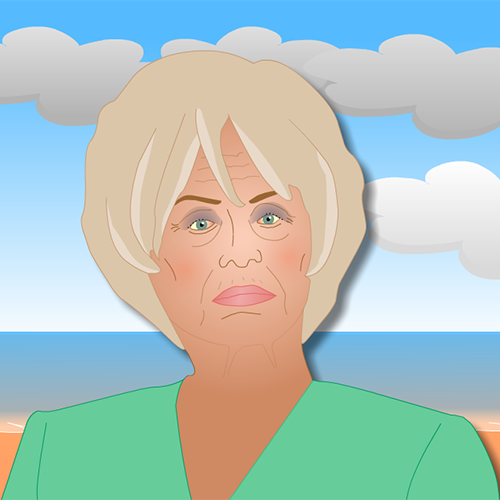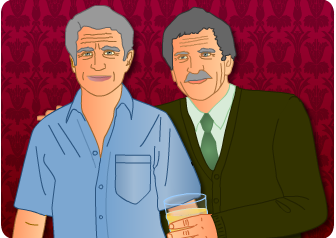One common method of implementing goal setting is to have a member of the multi-disciplinary team nominated as a key worker who works closely with the patient to identify their goals. Go through the slides to find out more about the headings.
An example of a patient centred goal setting sheet [.pdf, 18KB]
What is goal setting?
‘Goal setting can be defined as a behavioural target that is central to rehabilitation, but is also effective in
secondary risk factor reduction such as weight loss, smoking cessation or alcohol reduction.’ ‘Goals are worked towards over a specified period of time, both short and long term.’ (RCP 2016).
What is patient centred goal setting?
These are goals that are led by the patient. The clinical team and the patient identify the patient’s primary rehabilitation aims with respect to their recovery and functional ability and from this patient relevant goals are identified and documented in a narrative patient friendly style. The goals are determined by the patient. Whilst the team can guide the patient if a patient does not identify areas as areas they need to work on then they cannot/ should not be documented as the patient’s goals.
What are therapeutic/intervention goals?
These are goals that are totally identified and set by the clinical team. The patient may be aware of the goals but does not directly contribute. The goals reflect what the professional team anticipates will be the patient’s potential level of functional ability. They relate to activities that the team deems to be important for the patient’s rehabilitation and are documented in a more clinical/medical intervention style. By setting and documenting therapeutic goals it ensures that tasks happen in a timely manner. Therapeutic/intervention goals can often occur alongside patient- centred goals e.g. the team has identified that they need to get Mr Rowan more involved in Alice’s care. Whilst this is not Alice’s specific goal in order to make sure that this occurs the team will need to co-ordinate and manage this. The therapeutic goal set for two weeks time could therefore be:-
‘Mr. Rowan will have attended therapy and nursing sessions and be competent transferring his wife in and out of a chair and will have begun assisting her in the toilet with supervision of one staff’.
What if a patient cannot do patient centred goal setting?
For some patients with marked cognition and comprehension problems patient centred goal setting is not appropriate. In this situation intervention/therapeutic goals are more appropriate. It is important to constantly review if the patient’s abilities have changed so that should they become capable of patient centred goal setting that they get offered that opportunity. Patients with expressive difficulties with the correct assistance can still set goals.
The theory is all very well but how can I put into clinical practice?
Q. Alice’s main goal is to walk, however the team agree this is unlikely. What should you do now? Select true or false for each of the options listed below.
Following your discussion with Alice she tells you exactly what she sees are the difficulties she experiences in relation to her walking and how she feels she can overcome them
Alice: ‘Okay, I know I struggle to get up from a chair and I need help, so I suppose I need to be able to do that to walk, and when walking in the gym the physios move my leg and stop me from falling. So that makes the physio’s think I can’t walk by myself. But I really think if I had a higher chair I could get up by myself and if they let me try a frame or a stick I would be able to walk without any help’
You now need to start writing her next set of goals with her, what are you going to set and how do you write them?
You and Alice look at the goals and discuss the outcome. From the information gained from the MDT meeting what are the outcomes from Alice’s goals? Use the outcomes scoring key below to help you decide.
| Goal Outcome |
Definition |
| A = Achieved |
The patient has consistently completed all components of the goal. |
| P = Partially Achieved |
The patient has consistently achieved a recognisable component of the goal but not the whole task e.g. if the goal is to get up and walk with help of one and the patient has only achieved the sitting to standing component then the goal is only partially achieved. If a patient inconsistently manages a goal this does not count as a partially achieved goal. |
| E = Exceeded |
The patient has exceeded the goal set e.g. if the goal was to walk in the ward with supervision but the patient is now independently mobile then it would be documented that they had exceeded the goal set. |
| N = Not Achieved |
The patient has failed to consistently achieve any components of the goal set. |
Q. What are the outcomes of Alice’s current goals?
That afternoon the key worker meets with Alice to feedback from the MDT meeting and to review and discuss her goals.
Follow the conversation Alice has with her key worker. Go through the slides to move from scene to scene.
The multidisciplinary team (MDT) have gathered for their weekly MDT Meeting. The team have just begun discussing Mrs Alice Rowan.
Go through the slides to see the team members and find out how Alice is progressing.
At the MDT meeting it is agreed that the key worker will now go and meet with Alice to agree her goals.

Introduction

Mrs Alice Rowan is a 68 year old lady who collapsed by the swimming pool while at her holiday home in Lanzarote. She was admitted to the local hospital with complete loss of movement down her left side. Two weeks later she was flown back to the UK and admitted to her local stroke rehabilitation unit. She has had 3 months of intensive rehabilitation and in that time she has made some steady progress. However her physical ability has remained the same for the last 4 weeks and the team feel that she is unlikely to regain the ability to walk. Her husband who is fit and well is very keen to take her home to their bungalow with support as required.
Outcome

Alan left hospital after 6 weeks and returned home with ongoing rehabilitation. He is able to walk with his dog, Patch, and socialise with his brother and friends. He has also found it beneficial working through the Self Help4 Stroke self management resource recommended to him by his therapy team.
Key Messages
- Patients spend a limited time in therapy and therefore self practice in environments out with therapy should be supported and actively encouraged to maximise their outcome
- Various options are available in the management of spasticity and should be considered early on
- Orthotics, of any sort, that are provided should have a clear management strategy
- Physical therapy interventions should aim to address a patient’s needs and requirements in relation to their rehabilitation. Patient input is a vital part of the rehabilitation process. By listening to Alan’s concerns the rehabilitation team were able to formulate an effective treatment plan that met his personal goals.
To learn more about the management of tone and spasticity following stroke visit STARs AM 19: Management of Tone and Spasticity After Stroke: A Role for Everyone.
To learn more about self-management and the strategies which may be used in the process of self management visit STARs AM 15: Self Management.
Two weeks later Alan is walking independently around the ward area. He walks outside with supervision and a stick. He will be independent in another week and his discharge date has been set. He continues to require FES for his dropped foot although some increased activity in his ankle muscles has been noted and it is hoped that he will not require FES long term. The therapist has discussed with Alan organising bringing Patch into hospital so he can practice walking with his dog.
See additional information for links to resources on pet therapy in healthcare settings.





